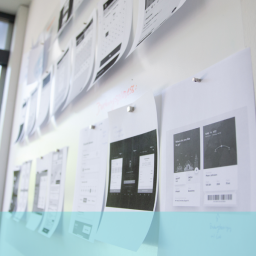
The first thing you thought when you saw the title of this piece might well have been ‘What is a screener?’ A screener is simply a question, or set of questions, that help you to eliminate or select in candidates for participation in a piece of UX research. When you are conducting a usability test there is little point recruiting people who have no knowledge, interest or use for the product or service you are testing; on the other hand you might not wish to attract only existing users as you wish to expand and cast your net a bit wider than your normal clientele.
It is a very useful starting point in this process to have a clear idea of whom you wish to speak to in a particular usability test and defining them in clear, relevant and identifiable terms so selecting in and screening out becomes an easier and more transparent operation. If your organisation uses and has constructed customer personas these would be ideal or screening against.
So here are some useful hints on preparing a screener for your usability test:
- Talk to participants in the sort of language that is likely to engage and hold them. The more formal, technical or complex you make the screener, the less likely you are to get the results you are seeking.
- There are three possible question types you can use; the straightforward yes’ or ‘no’; multiple choice with a single answer from a closed series; and checkboxes where the user can record multiple responses to a question or statement.It is not recommended to use yes or no questions as these tend to provide too little information and require follow-up questions or more background to contextualise the response. They can also be leading and draw users to answering what they perceive to be the right answer.Multiple choice questions provide more definite information but still leave gaps and might not provide the whole picture. Checkboxes tend to provide more opportunity to be expansive and comprehensive in answering though, obviously, this is limited by the options provided unless a narrative section is included. You are looking for the best chance of suitable candidates to be included without making it too easy for them to select themselves in.
- If there are absolutely critical characteristics (or total dealbreakers) make sure you get this information out early in the screener so you can eliminate people without going through the whole process and then discovering they don’t meet some essential criterion.
- Some people will want to give you the answers they think you want; others might have reasons for hiding their true feelings or situation. The objective of your questioning needs to be clear without making it obvious what you are looking for and why; make sure your questions are carefully framed so they don’t give away too much about broader context and possible aims and outcomes. You need people involved to meet your requirements and not their own.
Screeners can save you a lot of wasted effort and money and enable you to focus your resources where you are likely to get the best return. If you would like to know more about how to construct and apply them, why not email us at hello@ux247.com.


















[…] data required, how to uncover and collect it, and present it to the designers. That means writing usability screeners (questions required to pinpoint target users for the project), discussion guides, data collection […]